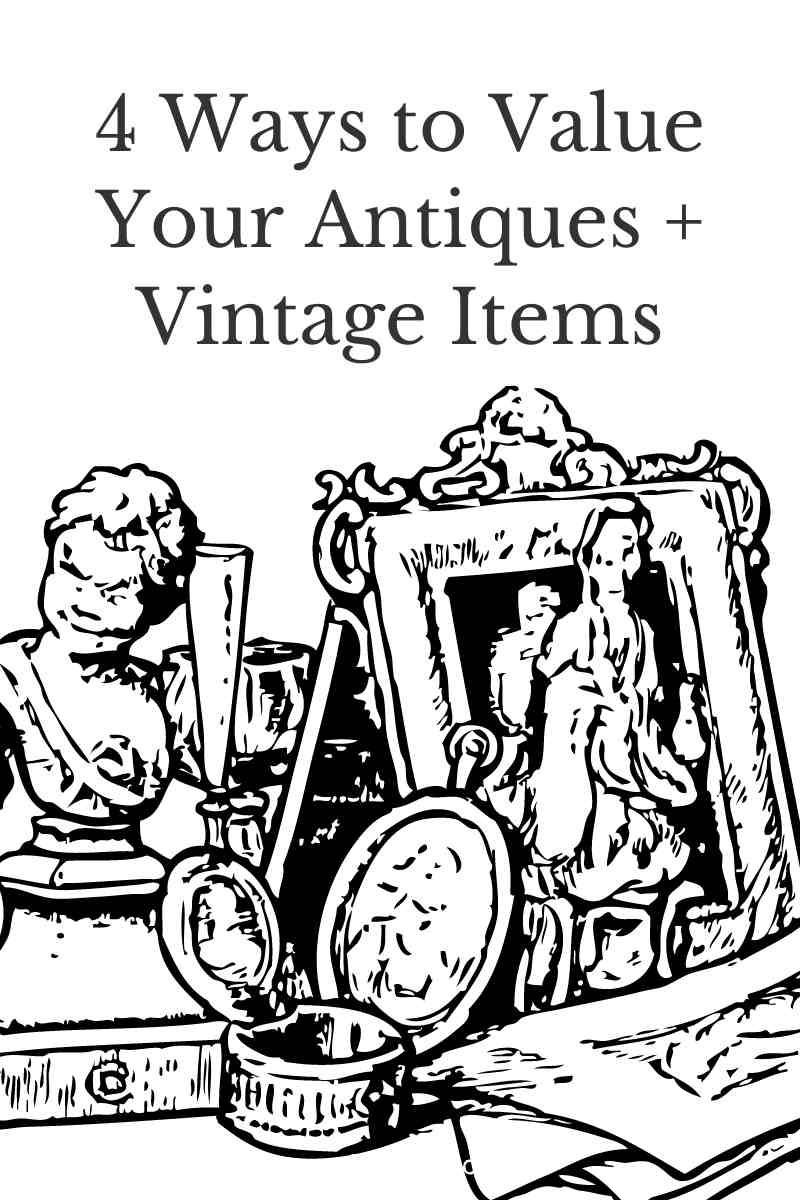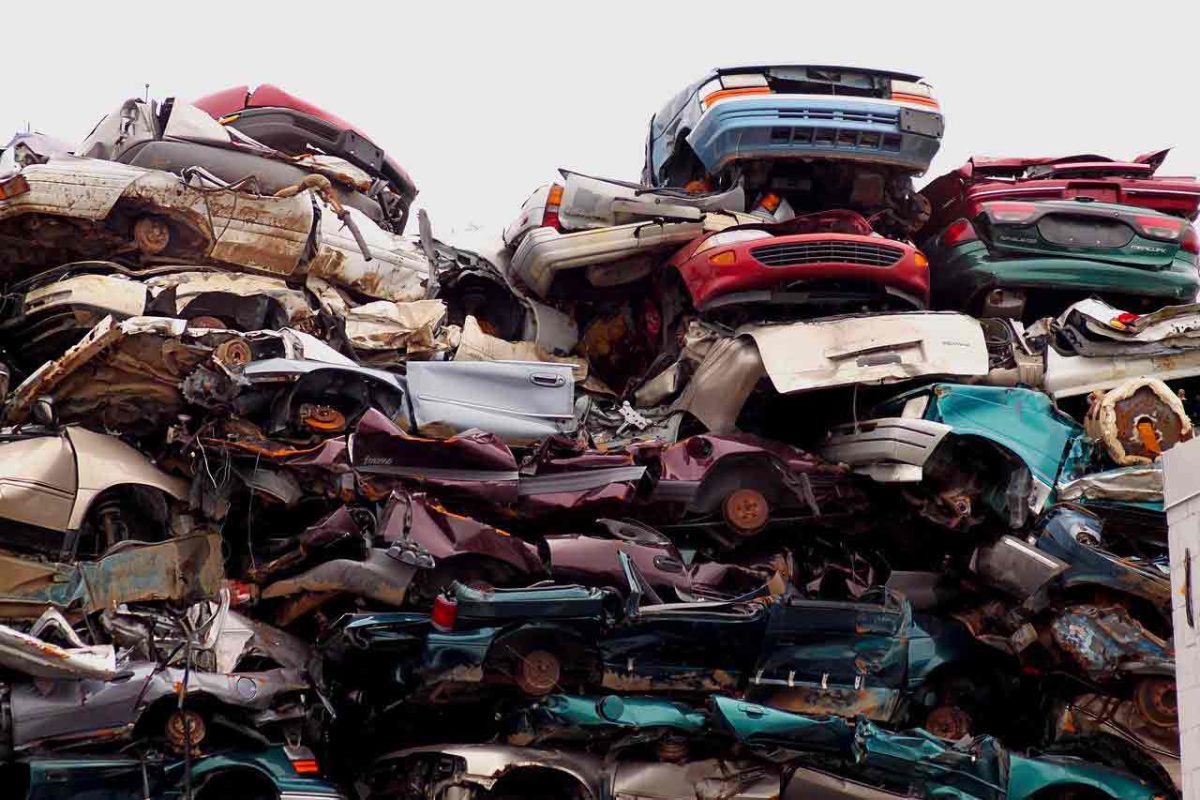We may receive a commission when you make a purchase from one of our links to sites such as eBay and others. As an Amazon Associate we earn from qualifying purchases. Thank you for support!
In order to get an idea of how much an old antique or vintage item might be worth, we need to first look at the different types of value in order to value your antiques accurately.
In this post, we’ll look at and explain the 4 main ways we can assign value to antiques, vintage items and collectibles.

Comparative Market Value of Antiques
Comparative market value is typically the most common type of value we use to determine what something may be worth. Comparative market values are used anytime you are buying or selling something, whether it’s real estate or personal property.
The market value of something is how much buyers are willing to pay for it. Simple as that!
We find the comparative market value by looking at what similar items have sold for recently, as well as similar items that may currently be for sale. We compare the prices of similar items.
We can get this information relatively easily – a subscription to WorthPoint for example can help you very quickly find the market value for nearly any item.
When trying to determine market value, it’s very important that you consider who the buying audience is and where you are selling it. You could have a rare and valuable item at a flea market that nobody will pay $50 for – meanwhile, that same item may go for $5000 on an online auction site and $15,000 or more at an auction house.
This is why when selling your antiques and vintage collectibles you very carefully consider what market you are selling to!
The Question to Ask to Determine Market Value: How much are other people willing to pay for this?
Replacement Value
Replacement value is another popular way to value something. With replacement value, we are looking at how much it might cost to replace an item or to recreate the item.
Insurance companies often factor in replacement value when insuring items such as appliances. Your used refrigerator might only be worth the value of scrap metal if we look at market value, but if you had to replace the refrigerator your cost would be significantly higher. Your fridge might only be worth $50 as scrap – but to buy a new refrigerator you would probably have to spend at least $800.
To get the replacement value of an item, look at what it would cost to either build/replicate or replace it with something similar.
Question to Ask to Determine Replacement Value: Could I buy something else like this that would be able to replace it?
Salvage Value for Damaged Items

Salvage value is the value we place on something when it no longer can serve its original purpose, whether it’s damaged, broken, or no longer useful.
Many times we can salvage the raw materials or salvage parts and pieces from the item – this is the salvage value.
In most cases, salvage value is quite low compared to market value and replacement value. Salvage value is based only on the value of the raw materials of the item – the metal in a wrecked car for example.
Occasionally, the salvage value can actually be worth more than the value of the item itself. Sterling silver comes to mind here – there’s not a lot of market demand for common household items made out of sterling silver – but the value of silver itself is quite high.
More often than not, the prices we see on Sterling Silver goods are based on the current salvage value of silver itself, and not because that specific item like a spoon or candlestick is particularly rare or valuable.
Question to Ask: Is this item broken? Are the parts and pieces useful or valuable to sell?
Intangible / Non-Fungible Value
Beyond the market, replacement, and salvage value, there is one value for your antiques, vintage items, and collectibles that is perhaps the most difficult to calculate, and this is the intangible/non-fungible value of an item.
With all of our other types of value, we have real numbers. You can see an item sold online for $5. You can calculate it would cost you $15 to make yourself. You can see that as scrap it might be only worth 95 cents.
With intangible value, there is something about the item that cannot be measured in terms of money. The word intangible itself is defined as “unable to be touched or grasped; not having a physical presence.”
We cannot easily define what is intangible value, and it’s even more difficult to determine how to translate this into a financial number.
An item might be worth $5 to someone who found it at a garage sale, while the same item might be worth $5,000 to someone who inherited it from a loved one.
Something worthless as even scrap might be valued at $50,000 because it was connected to a famous person or historical event, such as in the case of Jimi Hendrix’s rusty guitar strings.
As the world starts diving into the world of NFT’s, which are based on intangible value, it’s likely that we will see a lot more about intangible value come into the spotlight in the future.
Question to Ask: Is there something about this item that makes it distinctly unique? Is there some characteristic or benefit of this item that cannot be substituted?
Which Value Should You Use When Pricing Antiques?
Now that you understand the types of values we can place on antiques and vintage items, it’s up to you to decide which value to go by when selling an item.
If your item is common and not especially rare or extraordinary, most of the time you will go with the market value of an item when selling it.
However, something you should ALWAYS research prior to listing something for sale at market value is the other values the item may have. In many cases, that intangible value can fetch you far, far more than the average market value.
I hope this information on the different types of values is helpful for you in determining what your antiques and vintage collectibles are worth. Have questions? Ask them below!
